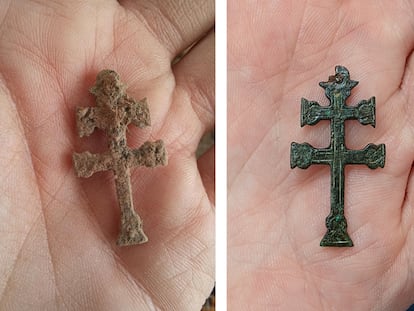A double murder during Spain’s Civil War unearths a medieval monastery
The search for the bodies of two young women shot in 1936 has also turned up a Visigothic tomb and a collection of coins from the 11th century
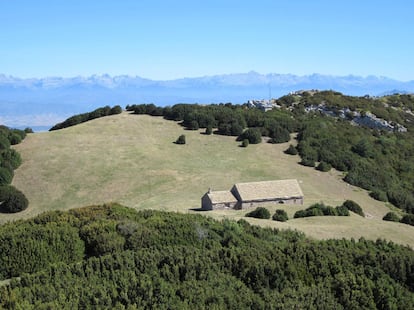

Lourdes Malón Pueyo, 18, was executed on August 20, 1936, at the onset of the Spanish Civil War. Right-wing Falangists shot her dead as she attempted to flee across the mountains. Her sister Rosario, 23, died the same day inside the cave where she had taken shelter with Lourdes, in addition to her father and brother. Their crime? Having embroidered a republican flag for the Socialist Youth association of Uncastillo, a municipality of Zaragoza, in northern Spain.
Between 2013 and 2020, five archaeological expeditions were undertaken in search of the skeletal remains of both young women. Rosario’s body was found in 2017, but not her sister’s, which is still missing. But the search, sponsored by the Charata Association for the Recovery of the Historical Memory of Uncastillo, with support from local and provincial funding, yielded another unexpected series of findings: the walls of the medieval monastery of San Esteban de Oraste, a Visigothic tomb, ceramics from the same period, a bell fragment with depictions of a friar in a chasuble, and a set of coins from the 11th century.
The study The archaeological site of Peñas de Santo Domingo: the phases of Hispanic-Visigothic and medieval occupation, by the specialists Francisco Javier Ruiz Ruiz, Tomás Hurtado Mullor, Roger Sala Bartrolí, Pedro Rodríguez Simón and José Ignacio Piedrafita Soler, notes that the place where both sisters were murdered lies within the municipality of Longás, close to the Pyrenees mountain range. An 18th-century shrine dedicated to Saint Dominic, which still stands, lends its name to the entire area, which also contains a cave - the same one where the family took shelter.
To find the bodies, 3,500 square meters of land were examined using ground-penetrating radar technology. “The final objective was to identify, describe and position any type of anomaly in the subsoil compatible with earth movements related to burials, determining possible burial points,” states the report.
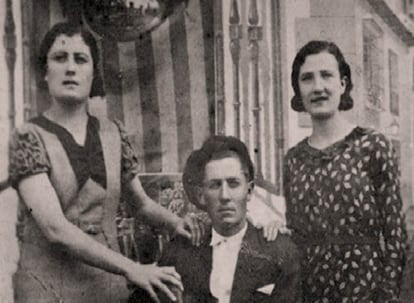
With the results pictured on the computer screens, it was decided to undertake 15 surveys at the spots that suggested “possible remains of pits or burials.” Two more searches were carried out inside the cave. To complete the investigation, metal detectors were also used to locate ballistic evidence (casings or shells from the Civil War) that might help locate graves or reconstruct the events of the past.
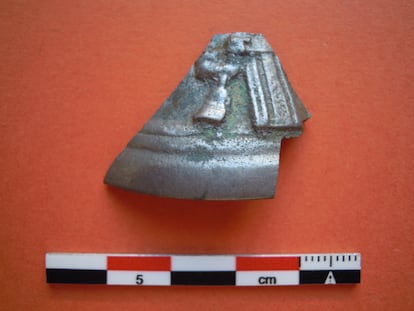
The work also confirmed the existence of “a hitherto unknown Hispanic-Visigothic occupation” comprising a burial and a dump. The grave measured 1.80 by 0.48 meters and contained the remains of an individual “in a supine position with the head facing northwest, the arms crossed on the hips and the lower extremities extended.” The forensic and genetic analyses determined that it was a young adult male, between the ages of 20 and 30 and 1.57 meters tall. Radiocarbon tests placed his death between the years 475 and 620. In the dump, in addition to charred animal bones, researchers found 261 fragments of ceramics, glass and various metal objects. The ceramic pieces were dated to the 6th or 7th centuries.
Specialists already knew that during the High Middle Ages, the monastery of San Esteban de Oraste or Orastre had been established at the top of the Peñas de Santo Domingo, sometime between 1030 and 1059. But the exact location was not known. Geophysical surveys “have now allowed us to document and define part of the floor plan of the old monastery, of which traces of walls are still visible next to the shrine of Santo Domingo.” This group of structures - at least 600 square meters have been investigated - includes “remarkable elements,” including a main structure that corresponds to a courtyard and a perimeter enclosure with walls half a meter thick.
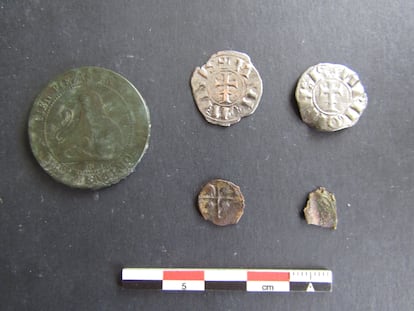
To the north of these structures, “possible linear elements that could be related to the central structure” were located, and two other lines of collapsed masonry walls emerged. “The data obtained by the geophysical survey allow us to confirm the existence of an important architectural complex, which should be identified with the possible remains of the medieval monastery of San Esteban de Orastre,” says Francisco Javier Ruiz Ruiz, head of the investigation.

Additionally, metal detectors turned up a wealth of objects, among them a set of coins from the 11th to 13th centuries, an iron arrowhead, a fragment of a metal bell with figurative decoration depicting a monk dressed in a chasuble and carrying a bell in his hand, which likely represents a member of the Order of Saint Anthony, founded in the year 1095, a copper earring with a translucent blue stone and embossed geometric decoration and an oval-shaped iron belt buckle,” which technicians believe to have been made between the 12th and 15th centuries.
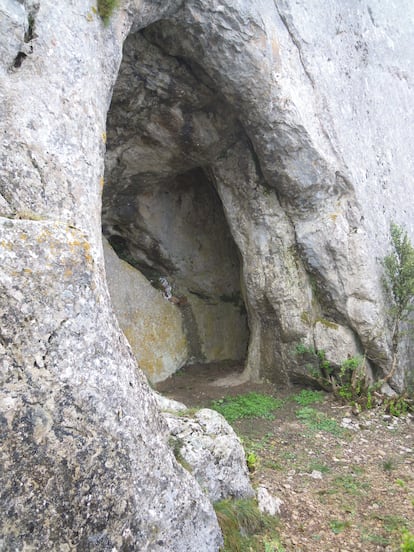
The settlement remained active for centuries until its definitive disappearance in 1836, when the Church’s assets were expropriated by the state. Exactly 100 years later, two young women, their father Francisco and their brother Mariano fled in terror to a cave in Las Peñas de Santo Domingo – their mother, Francisca Pueyo Prat, had already been shot a few days earlier. Upon being discovered, both young women were shot to death. Only the son, who managed to flee to Huesca (where he died in 1999), and the father were spared, but the latter could not bear so much pain and died of grief shortly after the cruel murder of his family. The walls of the convent of San Esteban de Oraste were the only witnesses to the crime.
Tu suscripción se está usando en otro dispositivo
¿Quieres añadir otro usuario a tu suscripción?
Si continúas leyendo en este dispositivo, no se podrá leer en el otro.
FlechaTu suscripción se está usando en otro dispositivo y solo puedes acceder a EL PAÍS desde un dispositivo a la vez.
Si quieres compartir tu cuenta, cambia tu suscripción a la modalidad Premium, así podrás añadir otro usuario. Cada uno accederá con su propia cuenta de email, lo que os permitirá personalizar vuestra experiencia en EL PAÍS.
¿Tienes una suscripción de empresa? Accede aquí para contratar más cuentas.
En el caso de no saber quién está usando tu cuenta, te recomendamos cambiar tu contraseña aquí.
Si decides continuar compartiendo tu cuenta, este mensaje se mostrará en tu dispositivo y en el de la otra persona que está usando tu cuenta de forma indefinida, afectando a tu experiencia de lectura. Puedes consultar aquí los términos y condiciones de la suscripción digital.
More information
Últimas noticias
Most viewed
- Pablo Escobar’s hippos: A serious environmental problem, 40 years on
- Why we lost the habit of sleeping in two segments and how that changed our sense of time
- Charles Dubouloz, mountaineering star, retires at 36 with a farewell tour inspired by Walter Bonatti
- Reinhard Genzel, Nobel laureate in physics: ‘One-minute videos will never give you the truth’
- The Florida Keys tourist paradise is besieged by immigration agents: ‘We’ve never seen anything like this’
